- 1School of Mathematics and Information Sciences, Neijiang Normal University, Neijiang, China
- 2Department of Mathematics, Abdul Wali khan University Mardan, Mardan, Pakistan
- 3Department of Mathematics, Near East University TRNC, Mersin, Turkey
- 4Department of Mathematics, Pir Mehr Ali Shah Arid Agriculture University, Rawalpindi, Pakistan
- 5Department of Mathematics, Faculty of Arts and Sciences, Cankaya University, Ankara, Turkey
- 6Institute of Space Sciences, Magurele-Bucharest, Romania
This research article is mainly concerned with the analytical solution of diffusion equations within a Caputo fractional-order derivative. The motivation and novelty behind the present work are the application of a sophisticated and straight forward procedure to solve diffusion equations containing a derivative of a fractional-order. The solutions of some illustrative examples are calculated to confirm the closed contact between the actual and the approximate solutions of the targeted problems. Through analysis it is shown that the proposed solution has a higher rate of convergence and provides a closed-form solution. The small number of calculations is the main advantage of the proposed method. Due to a comfortable and straight forward implementation, the suggested method can be utilized to nonlinear fractional-order problems in various applied science branches. It can be extended to solve other physical problems of fractional-order in multiple areas of applied sciences.
1 Introduction
Fractional calculus (FC) can be considered as one of the extensions of traditional ordinary calculus. The roots of FC dates back to about 300 years. The idea of fractional calculus arises from the fact that Leibniz used a notation for the nth derivative in his publication as
From the above applications, mathematicians implemented different methods to solve some vital differential equations of fractional-orders (FDEs), particularly partial differential equations of fractional-orders (FPDEs). FPDEs are considered to be basic mathematical techniques used to model various physical phenomena more precisely than integer-order. The non-linear FPDEs determine different phenomena in engineering and applied sciences. In particular, non-linear FPDEs are the best sources to be utilize in different fields such as material sciences, physics, thermodynamics, chemistry, chemical kinetics, and several other basic processes [11–21]. Various methods to solve FDEs are used in the literature, such as the variational iteration method [22], the modified Adomian decomposition method (MADM) [23], the differential transformation method (DTM) [24], the optimal homotopy asymptotic method (OHAM) [25], and the homotopy perturbation method (HPM) [26].
In 2006, Daftardar-Gejji et al. introduced the iterative method (IM) to solve functional equations [27, 28]. IM is used to solve DEs, of both integers as well fractional-order. In this article, we used the Shehu transform method and the iterative technique and introduced a new technique called the Iterative Shehu Transform method [ISTM] to find the approximate solution of FPDEs. It has been observed that the suggested technique has a simple and effective implementation compared to other existing methods such as the homotopy perturbation method, the variational iteration method, and the Laplace Adomian decomposition method [29].
The diffusion equation is a PDE which expresses the phenomenon which transforms atoms or molecules from a higher construction. The Fick’s law of diffusion was first described by the physiologist Adolf Fick. Later on, Fick’s law was converted into the Diffusion equation. Researchers generalized the classical Diffusion law to obtain modified Diffusion equations such as the hybrid classical wave equation and slow diffusion [30]. There are several diffusion equation implementations such as filtration, electromagnetism, geochemistry, phase transition, cosmology, biochemistry, acoustics, and dynamics of biological groups [31].
In the present paper, we apply ISTM to solve diffusion equations of the form.
(1) One-dimensional diffusion equation having fractional-order of the form:
Have the initial values
(2) Two-dimensional diffusion equation with a fractional-order of the form:
Have the initial values
(3) Three-dimensional diffusion equation with a fractional-order of the form:
Have the initial values
2 Preliminaries
In this section, important definitions regarding the present research article are presented.
2.1 Definition
Fractional derivative Caputo operator is given as [7, 8].
2.2 Definition
Riemann-Liouville fractional integral [7, 8].
2.3 Definition
Shehu transform function in set A is expressed by
The Shehu transformation which is defined by
The Shehu transformation of a function
2.4 Definition
The fractional derivative in terms of ST [32–35].
The ST of the fractional derivative is described as
2.5 Definition
The Mittag-Leffler function is expressed as [7, 8].
A further generalization of the equation is given in the form of
3 Idea of ISTM
In this section, we use ISTM to determine the general solution of fractional-order diffusion equations [32–35].
where
Applying Shehu transformation to Eq. 5, we obtain [32–35].
and by using the property of Shehu transform differentiation, we obtain
On taking inverse Shehu transform of Eq. 7, we obtain [32–35].
Now, applying the iterative method,
In Eq. 9, the linear and nonlinear parts R and N, respectively, are decomposed as follows Eqs. 11, 12
Substituting Eqs. 9, 11 in Eq. 8 yields
We set
However, the m-term approximate solution of Eqs. 5, 6 is determined by
4 Applications
In this section, we apply ISTM to obtain the solution of fractional order diffusion equation to show the accuracy and appropriateness of ISTM to solve exactly nonlinear FPDEs.
4.1 Example
Consider diffusion equation of fractional-order in one-dimension [31].
Have the initial values
Applying Shehu transformation to Eq. 17, we obtain
Taking inverse Shehu transform of Eq. 19
Using iterative technique
Thus, in the form of a series, the analytical solution can be written as
When
The exact solution is:
4.2 Example
Consider diffusion equation of fractional-order in two-dimension [31].
Having initial values
Applying Shehu transformation to Eq. 22, we obtain
Taking inverse Shehu transform of Eq. 24
Using an iterative technique
Thus, in the form of a series, the analytical solution can be written as
When
The exact solution in closed form is:
4.3 Example
Consider diffusion equation of fractional-order in two-dimension [31].
Having initial values
Applying Shehu transformation to Eq. 27, we obtain
Taking inverse Shehu transform of Eq. 29
Using iterative technique
Thus, in the form of a series, the analytical solution can be written as
When
The exact solution is:
4.4 Example
Consider diffusion equation of fractional-order in three-dimension [31].
Having initial values
Applying Shehu transformation to Eq. 32, we obtain
Taking inverse Shehu transform of Eq. 34
Using iterative technique
Thus, in the form of a series, the analytical solution can be written as
When
The exact solution is:
5 Conclusion
In the present article, the fractional view analysis is analyzed using an efficient analytical technique. Fractional derivatives are expressed in a Caputo sense. The present method is tested to solve diffusion equation of fractional-order. After investigation, we show that the present method is the best tool to use to solve nonlinear fractional order problems. The exact and obtained solutions in closed contact has verified the reliability of the present technique. Moreover, the graphical representation has confirmed the convergence of the approximate solutions toward the exact solutions and provide the closed form solutions of the targeted problems. The convergence phenomenon has confirmed the reliability of the suggested method.if
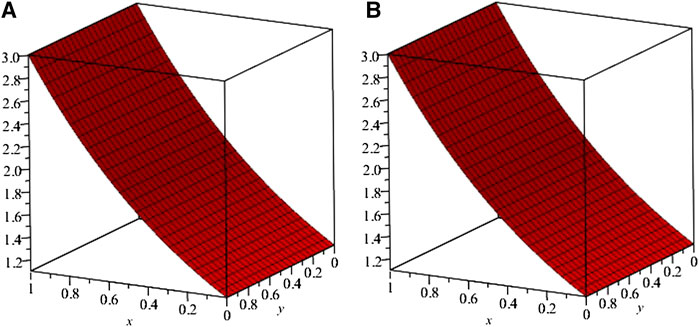
FIGURE 1. Exact solution (A) Exact (B) ISTM solutions of example one at
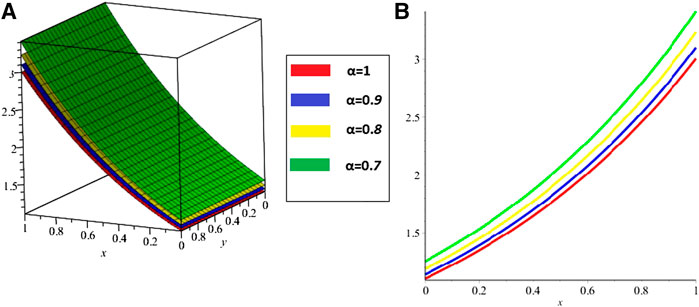
FIGURE 2. ISTM solution of example 1 (C) at various fractional-order α (D) the fractional-order solutions at
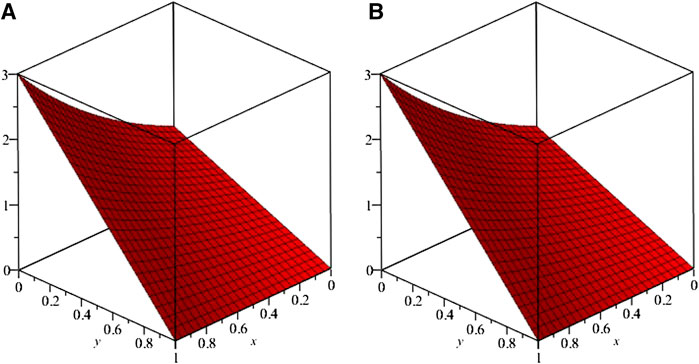
FIGURE 3. Exact solution (A) Exact (B) ISTM solutions of example 2 at
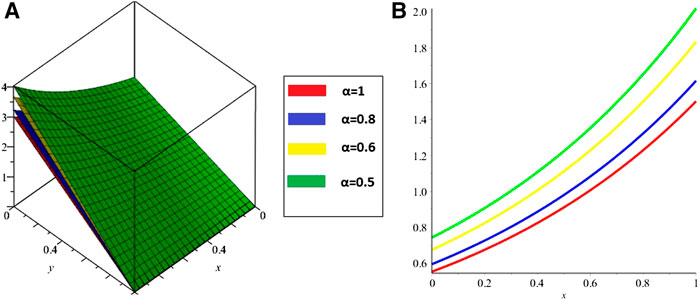
FIGURE 4. ISTM solution of example 2 (C) at various fractional-order α (D) the fractional-order solutions at
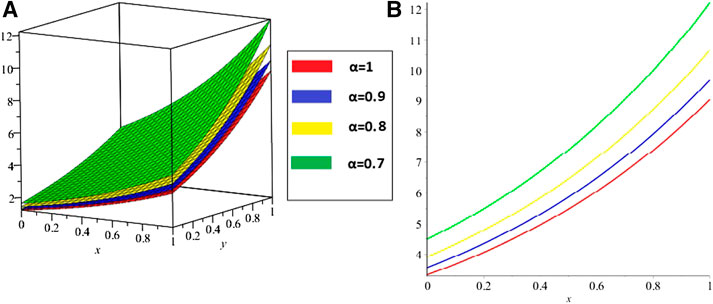
FIGURE 5. ISTM solution of example 3 (A) at various fractional-order α (B) the fractional-order solutions at
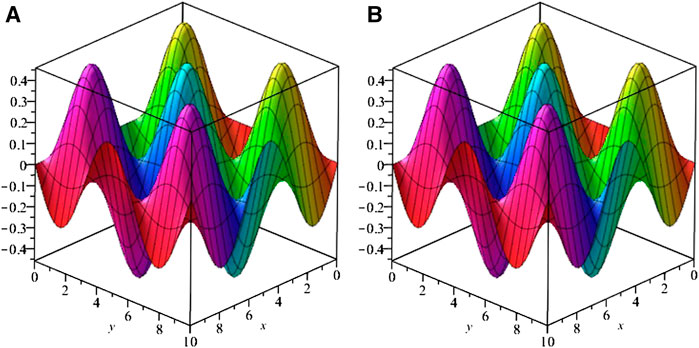
FIGURE 6. Exact solution (A)(B) ISTM solutions of example 4 at
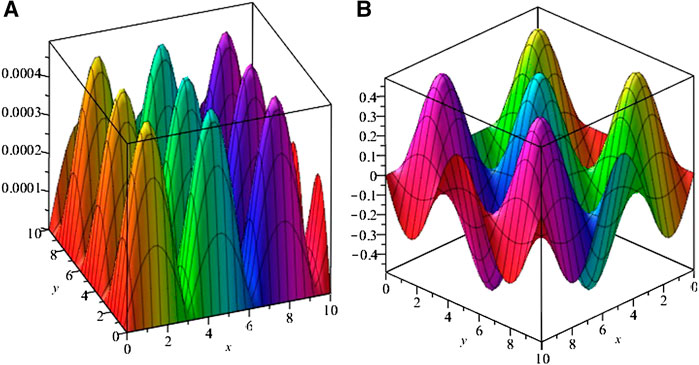
FIGURE 7. (C) Error graph (D) ISTM solutions of example 4 at
Data Availability Statement
Publicly available datasets were analyzed in this study. This data can be found here: N/A.
Author Contributions
Conceptualization, HK and SM; Methodology, HL; Software, LM; Validation, DB and HK; Formal Analysis, SM; Investigation, HK; Resources, HK; Writing—Original Draft Preparation, SM; Writing—Review and Editing, HK; Visualization, DB; Supervision, HK, DB; Project Administration, HL; Funding Acquisition, HL and LM
Conflict of Interest
The authors declare that the research was conducted in the absence of any commercial or financial relationships that could be construed as a potential conflict of interest.
Funding
Key Project of Science and Technology Plan of Sichuan Provincial Science and Technology Department (2017JY0199), Project of Education Department of Sichuan Province (JG2018-736).
References
1. Machado JAT, Baleanu D, Chen W, Sabatier J. New trends in fractional dynamics. J Vib Contr (2014) 20:963. doi:10.1177/1077546313507652
2. Dumitru B, Kai D, Enrico S, Juan JT. Fractional calculus: models and numerical methods. World Sci (2012) 3:426. doi:10.1142/10044
3. Khan H, Khan A, Al-Qurashi M, Shah R, Baleanu D. Modified modelling for heat like equations within Caputo operator. Energies (2020) 13(8):2002. doi:10.3390/en13082002
4. Khan H, Shah R, Baleanu D, Kumam P, Arif M. Analytical solution of fractional-order hyperbolic telegraph equation, using natural transform decomposition method. Electronics (2019) 8(9):1015. doi:10.3390/electronics8091015
5. Shah R, Khan H, Kumam P, Arif M. An analytical technique to solve the system of nonlinear fractional partial differential equations. Mathematics (2019) 7(6):505. doi:10.3390/math7060505
6. Syam MI. Analytical solution of the fractional Fredholm integrodifferential equation using the fractional residual power series method. Complexity (2017) 2017:1–6. doi:10.1155/2017/4573589
7. Ye H, Huang R. On the nonlinear fractional differential equations with Caputo sequential fractional derivative. Adv Math Phy (2015) 2015:1–9. doi:10.1155/2015/174156
8. Podlubny I. Fractional differential equations: an introduction to fractional derivatives, fractional differential equations, to methods of their solution and some of their applications, Vol 198. Amsterdam, Netherlands: Elsevier (1998)
9. Sabatier JATMJ, Agrawal OP, Machado JT. Advances in fractional calculus, Vol. 4. Dordrecht, Netherlands: Springer (2007).
10. Baleanu D, Diethelm K, Scalas E, Trujillo JJ. Fractional calculus, vol 3 of series on complexityNonlinearity and Chaos. Singapore: World Scientific (2012)
11. Srivastava HM, Shah R, Khan H, Arif M. Some analytical and numerical investigation of a family of fractional‐order Helmholtz equations in two space dimensions. Math Methods Appl Sci (2020) 43(1):199–212. doi:10.1002/mma.5846
12. Khan H, Shah R, Arif M, Bushnaq S. The Chebyshev wavelet method (CWM) for the numerical solution of fractional HIV infection of CD4+ T cells model. Int J Algorithm Comput Math (2020) 6(2):1–17. doi:10.1007/s40819-020-0786-9
13. Shah R, Khan H, Baleanu D, Kumam P, Arif M. A semi-analytical method to solve family of Kuramoto-Sivashinsky equations. J Taibah Univ Sci (2020) 14(1):402–11. doi:10.1080/16583655.2020.1741920
14. Wazwaz AM. The variational iteration method for solving linear and nonlinear systems of PDEs. Comput Math Appl (2007) 54(7-8):895–902. doi:10.1016/j.camwa.2006.12.059
15. Khan H, Shah R, Kumam P, Baleanu D, Arif M. An efficient analytical technique, for the solution of fractional-order telegraph equations. Mathematics (2019) 7(5):426. doi:10.3390/math7050426
16. Shah R, Khan H, Kumam P, Arif M, Baleanu D. Natural transform decomposition method for solving fractional-order partial differential equations with proportional delay. Mathematics (2019) 7(6):532. doi:10.3390/math7060532
17. Khan H, Chu YM, Shah R, Baleanu D, Arif M. Exact solutions of the Laplace fractional boundary value problems via natural decomposition method. Open Physics (2020) 18(1):1178–1187.
18. Khan H, Shah R, Kumam P, Baleanu D, Arif M. Laplace decomposition for solving nonlinear system of fractional order partial differential equations. Adv Differ Equ (2020) 2020(1):1–18.
19. Adomian G. Solving frontier problems decomposition method. Dordrecht, Netherlands: Kluwer Academic Publishers (1994)
20. Adomian G. The diffusion-Brusselator equation. Comput Math Appl (1995) 29(5):1–3. doi:10.1016/0898-1221(94)00244-f
21. Eltayeb H, Bachar I, K1l1çman A. On conformable double Laplace transform and one dimensional fractional coupled burgers' equation. Symmetry (2019) 11(3):417. doi:10.3390/sym11030417
22. Zhu J, Zhang YT, Newman SA, Alber M. Application of discontinuous Galerkin methods for reaction-diffusion systems in developmental biology. J Sci Comput (2009) 40(1-3):391–418. doi:10.1007/s10915-008-9218-4
23. Alderremy AA, Khan H, Shah R, Aly S, Baleanu D. The analytical analysis of time-fractional Fornberg–Whitham equations. Mathematics (2020) 8(6):987. doi:10.3390/math8060987
24. Shou D-H, He J-H. Beyond Adomian method: the variational iteration method for solving heat-like and wave-like equations with variable coefficients. Phys Lett (2008) 372(3):233–7. doi:10.1016/j.physleta.2007.07.011
25. Ali I, Khan H, Shah R, Baleanu D, Kumam P, Arif M. Fractional view analysis of acoustic wave equations, using fractional-order differential equations. Appl Sci (2020) 10(2):610. doi:10.3390/app10020610
26. Khan H, Shah R, Kumam P, Arif M. Analytical solutions of fractional-order heat and wave equations by the natural transform decomposition method. Entropy (2019) 21(6):597. doi:10.3390/e21060597
27. Sarwar S, Alkhalaf S, Iqbal S, Zahid MA. A note on optimal homotopy asymptotic method for the solutions of fractional order heat- and wave-like partial differential equations. Comput Math Appl (2015) 70(5):942–53. doi:10.1016/j.camwa.2015.06.017
28. Srivastava HM, Shah R, Khan H, Arif M. Some analytical and numerical investigation of a family of fractional‐order Helmholtz equations in two space dimensions. Math Methods Appl Sci (2020) 43(1):199–212.
29. Shah R, Khan H, Baleanu D, Kumam P, Arif M. A novel method for the analytical solution of fractional Zakharov–Kuznetsov equations. Adv Differ Equ (2019) 2019(1):1–14. doi:10.1186/s13662-019-2441-5
30. Jafari H. Iterative Methods for solving system of fractional differential equations. [PhD thesis]. Pune City (India): Pune University (2006)
31. Shah R, Khan H, Mustafa S, Kumam P, Arif M. Analytical solutions of fractional-order diffusion equations by natural transform decomposition method. Entropy (2019) 21(6):557. doi:10.3390/e21060557
32. Cuahutenango-Barro B, Taneco-Hernández MA, Gómez-Aguilar JF. On the solutions of fractional-time wave equation with memory effect involving operators with regular kernel. Chaos, Solit Fractals (2018) 115:283–99. doi:10.1016/j.chaos.2018.09.002
33. Gómez-Gardenes J, Latora V. Entropy rate of diffusion processes on complex networks. Phys Rev (2008) 78(6):065102. doi:10.1103/physreve.78.065102
34. Maitama S, Zhao W. New integral transform: Shehu transform a generalization of Sumudu and Laplace transform for solving differential equations. https://arxiv.org/abs/1904.11370 (2019)
35. Khan H, Farooq U, Shah R, Baleanu D, Kumam P, Arif M. Analytical solutions of (2+ time fractional order) dimensional physical models, using modified decomposition method. Appl Sci (2020) 10(1):122. doi:10.3390/app10010122
36. Bokhari A, Baleanu D, Belgacem R. Application of Shehu transform to atangana‐baleanu derivatives. J Math Comput Sci (2019) 20:101–7. doi:10.22436/jmcs.020.02.03
37. Belgacem R, Baleanu D, Bokhari A. Shehu transform and applications to caputo‐fractional differential equations. Inter J Analy Applica (2019) 17(6):917–27. https://doi.org/10.28924/2291-8639
Keywords: iterative shehu transform method, diffusion equations, caputo operator, mittag-leffler function, fractional differential equation
Citation: Liu H, Khan H, Mustafa S, Mou L and Baleanu D (2021) Fractional-Order Investigation of Diffusion Equations via Analytical Approach. Front. Phys. 8:568554. doi: 10.3389/fphy.2020.568554
Received: 10 June 2020; Accepted: 29 December 2020;
Published: 23 February 2021.
Edited by:
Andrea Gabrielli, Roma Tre University, ItalyReviewed by:
Ervin Kaminski Lenzi, Universidade Estadual de Ponta Grossa, BrazilHaci Mehmet Baskonus, Harran University, Turkey
Copyright © 2021 Liu, Khan, Mustafa, Mou and Baleanu. This is an open-access article distributed under the terms of the Creative Commons Attribution License (CC BY). The use, distribution or reproduction in other forums is permitted, provided the original author(s) and the copyright owner(s) are credited and that the original publication in this journal is cited, in accordance with accepted academic practice. No use, distribution or reproduction is permitted which does not comply with these terms.
*Correspondence: Hassan Khan, aGFzc2FubWF0aEBhd2t1bS5lZHUucGs=
 Haobin Liu
Haobin Liu Hassan Khan
Hassan Khan Saima Mustafa
Saima Mustafa Lianming Mou1
Lianming Mou1 Dumitru Baleanu
Dumitru Baleanu